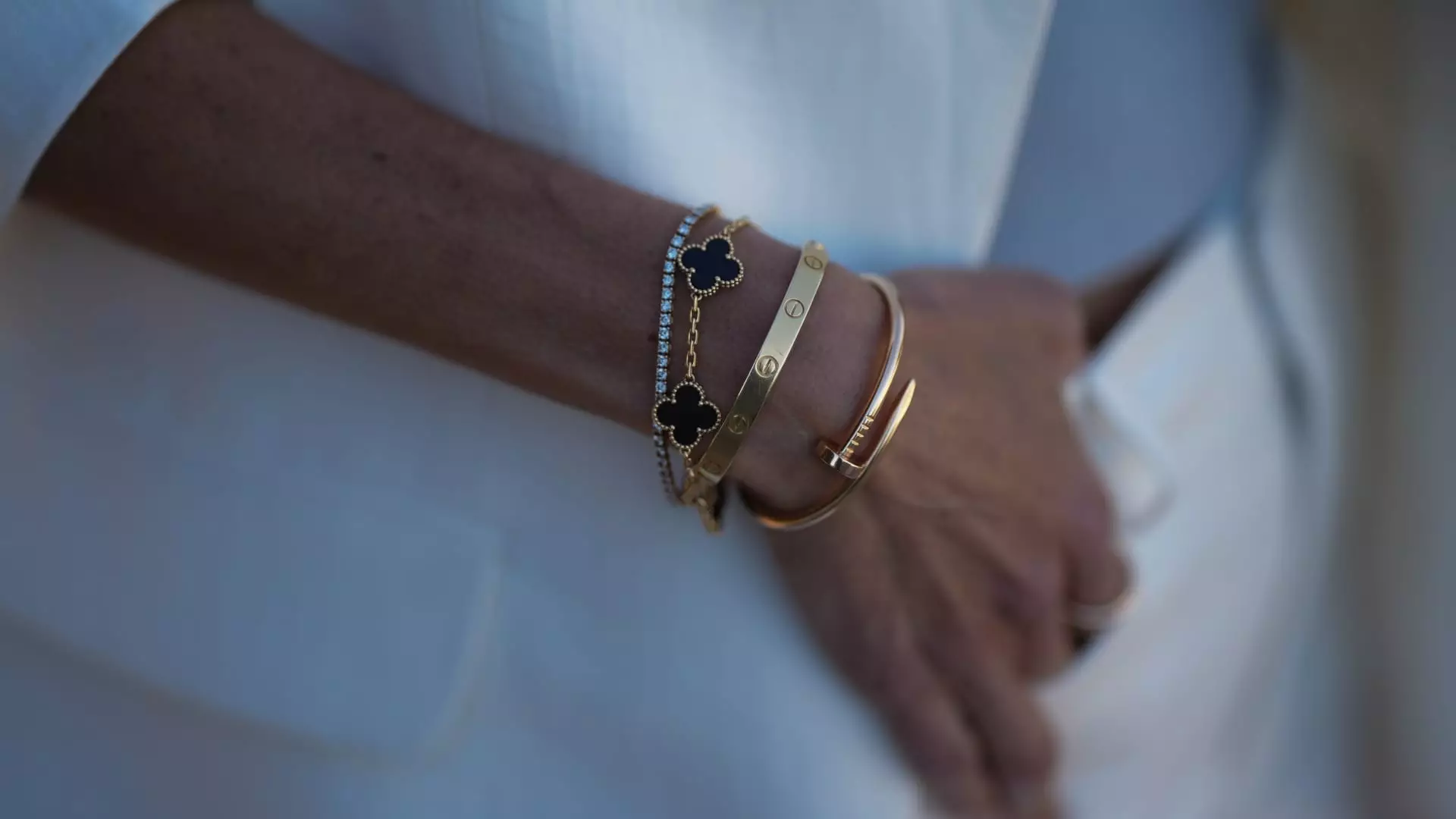In early 2025, optimism ran high within the luxury retail sector. Industry insiders anticipated a renaissance driven by holiday shopping enthusiasm and a sense of post-election euphoria. Many believed that the momentum from the excellent fourth quarter of the previous year would carry into the new year, signaling a robust recovery. However, the reality depicts a starkly different picture. Data from Citigroup reveals that U.S. credit card spending on luxury goods has actually decreased during the first five months of 2025 compared to the same period in 2024. This grim statistic suggests that the expected rebound remains an elusive mirage.
While May’s luxury spending experienced a slight respite with a 1.7% year-over-year decline—less severe than April’s 6.8% and March’s 8.5% declines—the overall trend casts a pall over the sector. The initial optimism was based on surface-level indicators, such as short-term upticks or isolated category performances. Still, the larger, more insidious weakness persists: a structural decline that cannot be masked by temporary fluctuations. Luxury brands are confronting a nuanced reality where consumer confidence remains fragile, and the willingness to splurge is waning. The illusion of a vibrant market is being punctured, exposing deeper economic and psychological undercurrents that threaten the long-term viability of the high-end retail landscape.
Segment Disparities Reveal a Sector in Disarray
A closer examination of spending patterns uncovers a fractured luxury ecosystem. Jewelry emerges as a rare bright spot, consistently outperforming other categories such as leather goods and ready-to-wear. Notably, jewelry sales have seen steady growth since September 2024, culminating in a 10.1% increase in May. Furthermore, jewelry consumers are not only spending more on single transactions but are also more likely to make repeat purchases, with high-end brands losing some customers but seeing those who stay increase their expenditure by approximately 11.7%.
This phenomenon underscores an interesting paradox: consumers perceive jewelry not only as a luxury item but as an investment with intrinsic and sentimental value. Citigroup analyst Thomas Chauvet points out that jewelry—especially high-end pieces—has become a form of wealth preservation amidst economic uncertainties. The recent rise in gold prices further incentivizes consumers to view jewelry purchases as dual-purpose investments and personal milestones. Given that gold has appreciated by over 25% since the start of the year, and high-end brands like Cartier have increased their prices modestly, purchasing jewelry presents a perceived advantage over other luxury categories.
In stark contrast, handbag brands seem to have lost ground. Price hikes of 30% to 40% since the pandemic have failed to deliver additional value, with stylistic and design stagnation stemming from a saturated market. Consumers increasingly see handbags as commodities rather than aspirational items; their visual uniformity across brands diminishes desirability. Meanwhile, luxury watch sales have experienced some growth, but the gains are inconsistent and often dictated by stockpiling behavior rather than genuine consumer demand. These disparities highlight a shifting consumer landscape where investment value and differentiation determine purchasing decisions more than mere branding.
The Economic and Geopolitical Headwinds Sabotaging Confidence
Several macroeconomic factors loom ominously over the luxury sector’s fragile recovery. First, the strength or weakness of the U.S. dollar plays a significant role in shaping consumer behavior. Despite a recent improvement in equity markets, the dollar remains about 10% weaker than at the start of the year. A weaker dollar undermines American consumers’ ability to travel abroad and purchase foreign luxury goods, a significant component of high-end spending. Conversely, a strong dollar tends to boost domestic spending by enhancing consumer confidence, but that scenario seems increasingly distant given current economic headwinds.
Adding to the uncertainty is the looming reactivation of tariffs. The 90-day pause on reciprocal tariffs negotiated earlier in the year is nearing expiration, and the threat of renewed trade barriers injects unpredictability into the market. Elevated geopolitical tensions, exemplified by the Iran-Israel conflict and volatile oil prices, further dampen consumer sentiment. Rising energy costs tend to drain disposable income and exacerbate inflationary pressures, diminishing consumers’ appetite for discretionary luxury spending.
Chauvet’s insights reinforce this pessimistic outlook: the recent uptick in luxury sales is more about tactical inventory movements, stockpiling reactions, and preparatory measures rather than genuine demand revival. Consumers are hesitant; economic headwinds and geopolitical uncertainties create a climate of caution. The luxury realm, once seen as resilient and high-margin, is revealing its vulnerabilities. The sector’s reliance on perception—of investment, exclusivity, and emotional value—cannot withstand prolonged economic turbulence for long, especially when broader macro factors continue to constrict disposable income and consumer confidence.
Questioning the Long-Term Viability of the Luxury Boom
The current state of luxury retail forces a reevaluation of long-held assumptions about consumer loyalty and market resilience. The sector seemingly ignores the deeper implications of stagnant product innovation, inflation-driven price hikes, and global instability. For decades, luxury brands banked on their ability to continually elevate desirability through scarcity, exclusivity, and innovation. Yet, as Chauvet suggests, the sameness across handbag styles and a lack of fresh design threaten to commodify the luxury experience itself.
The trend toward jewelry as a safe investment reflects a broader shift—luxury spending is increasingly driven not by aspirational desire alone but by intrinsic value and financial prudence. Consumers are becoming more selective, prioritizing purchases that serve dual roles—both as personal adornments and as wealth safeguards. This shift could be a harbinger of a more cautious, investment-driven luxury market, where emotional appeal must be augmented by tangible or intrinsic value.
With the threat of renewed tariffs, geopolitical crises, and a sluggish economic outlook, the luxury retail sector faces a pivotal challenge. Its business model, heavily reliant on perception and discretionary spending, is vulnerable to external shocks beyond its control. Long-term growth may hinge on luxury brands innovating not just in design but in value proposition—merging emotional allure with fiscal prudence. Otherwise, the current downturn could morph into a sustained contraction, unsettling the optimistic narratives long propagated within the industry.

